Fossils and Extinct Animals
Fossils are the preserved remains or traces of ancient organisms. They provide valuable information about the history of life on Earth, including the types of organisms that lived in the past, their environments, and the changes that have occurred over time.
Types of Fossils
There are several types of fossils, including:
- Body fossils - the preserved remains of an organism's body, such as bones, teeth, or shells.
- Trace fossils - the preserved evidence of an organism's activity, such as footprints, burrows, or nests.
- Cast fossils - formed when a mold of an organism is filled with minerals, creating a replica of the original organism.
- Petrified fossils - organic material is replaced by minerals, turning the remains into stone.
Formation of Fossils
Fossils are formed through a process called fossilization, which typically involves the following steps:
- Death and burial - the remains of an organism are buried in sediment, protecting them from decay and scavengers.
- Compression and mineralization - over time, the remains are compressed by the weight of the overlying sediment and minerals replace the organic material, forming a fossil.
Extinct Animals
An extinct animal is one that no longer exists, either because it has died out or evolved into a new species. Extinction can occur due to natural processes, such as environmental changes, or as a result of human activities, such as hunting or habitat destruction.
Study Guide
Here are some key points to remember about fossils and extinct animals:
- What are fossils and what information do they provide about the history of life on Earth?
- What are the different types of fossils and how are they formed?
- Explain the process of fossilization.
- What is an extinct animal and what are the causes of extinction?
- Identify and describe some famous extinct animals, such as the dinosaurs.
◂Science Worksheets and Study Guides Fourth Grade. Fossils and extinct animals
Study Guide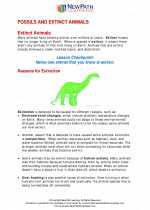 Fossils and extinct animals
Fossils and extinct animals  Worksheet/Answer key
Worksheet/Answer key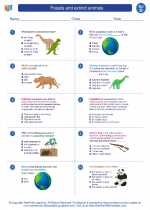 Fossils and extinct animals
Fossils and extinct animals  Worksheet/Answer key
Worksheet/Answer key Fossils and extinct animals
Fossils and extinct animals  Worksheet/Answer key
Worksheet/Answer key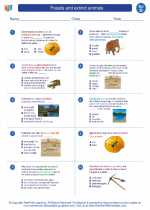 Fossils and extinct animals
Fossils and extinct animals  Vocabulary/Answer key
Vocabulary/Answer key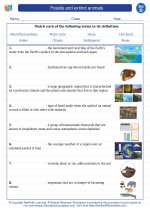 Fossils and extinct animals
Fossils and extinct animals  Vocabulary/Answer key
Vocabulary/Answer key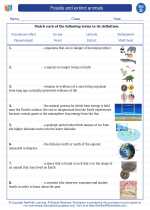 Fossils and extinct animals
Fossils and extinct animals  Vocabulary/Answer key
Vocabulary/Answer key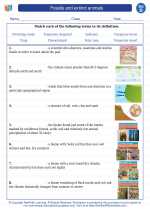 Fossils and extinct animals
Fossils and extinct animals  Vocabulary/Answer key
Vocabulary/Answer key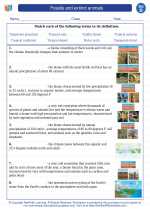 Fossils and extinct animals
Fossils and extinct animals 

 Worksheet/Answer key
Worksheet/Answer key
 Worksheet/Answer key
Worksheet/Answer key
 Worksheet/Answer key
Worksheet/Answer key
 Vocabulary/Answer key
Vocabulary/Answer key
 Vocabulary/Answer key
Vocabulary/Answer key
 Vocabulary/Answer key
Vocabulary/Answer key
 Vocabulary/Answer key
Vocabulary/Answer key

The resources above cover the following skills:
Concepts of Life Science (SC1, SC2, SC3)
The student demonstrates an understanding of how science explains changes in life forms over time, including genetics, heredity, the process of natural selection and biological evolution by describing fossil evidence (e.g., casts, track ways, imprints, etc.) of extinct organisms.